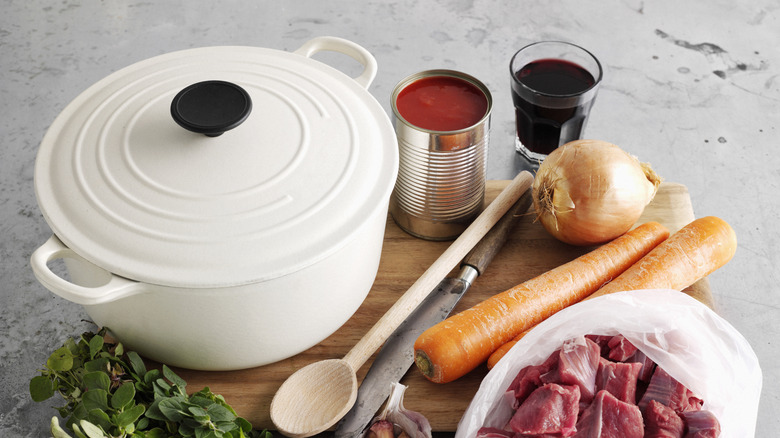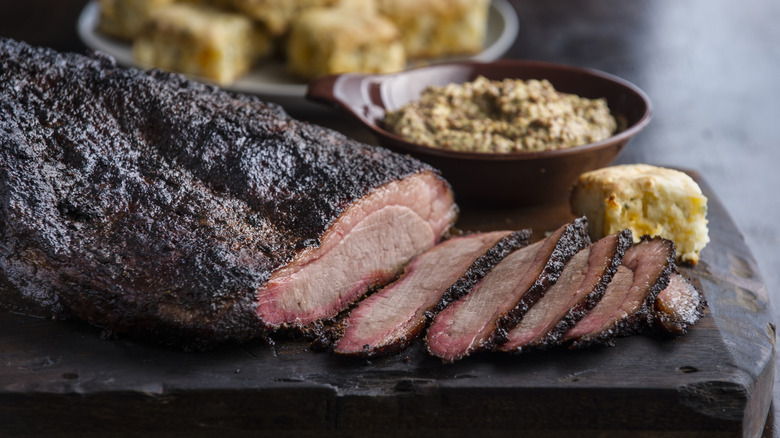Prevent An Overcooked Brisket With This Simple Dutch Oven Trick
If you want a versatile cut of beef loaded with flavor that won't break the bank, tougher cuts like chuck roast and brisket are your perfect main dish. Brisket is especially beloved by barbecue pit masters and home cooks alike for its ability to soak up flavors like a delicious, meaty sponge. Braised properly in a brisket-forward slow cooker chili or nestled among aromatics and savory stock in the bottom of a Dutch oven, brisket develops a gorgeous richness.
Of course, the key term here is properly braised. Brisket is fairly forgiving, but even the most deeply marbled cut can eventually overcook, producing dry, stringy results. One way to avoid this is to simmer your brisket in a stew or chili, as mentioned. However, if your idea of the perfect meal features a braised beef roast as the main dish, the best way to avoid overcooking it is to thoroughly understand your Dutch oven. These sturdy cast iron cook pots are designed to hold in heat and moisture, allowing your food to do its thing with little to no interference.
The lid is particularly crucial to this process, as its lightly rounded shape helps circulate heat and steam around your food. However, this can backfire if the air inside your Dutch oven gets too hot and your braising liquid begins to boil. To prevent this, place the lid slightly offset on your Dutch oven. This allows excess steam to escape and helps keep the oven's contents at a steady temperature.
More tips for making your Dutch oven work for you
While cracking the lid open can help the temperatures inside your Dutch oven remain constant, there are a handful of other things you can do to help this versatile cooking vessel do its job. Cast iron heats very slowly and remains hot for a long time, meaning you don't need to crank up your oven for it to be effective. Instead, preheat it over medium heat on your stovetop or in your oven with a few tablespoons of fat to keep the cast iron itself from drying out.
Additionally, once your Dutch oven is preheated and filled with your gorgeous brisket, root veggies, and a savory jus, continue resisting the temptation to turn up the heat. Rather than cooking your food faster, this will just increase the heat inside your vessel. With the lid propped open a bit, this will allow the stock around your brisket to evaporate, increasing the risk of things drying out and burning. Instead, use medium or low heat and trust the process.
Using the propped lid method is also great for when you need to check on your brisket. Having that little gap makes it easier to hear if the stock is starting to boil, which is a signal you need to turn down the heat. Escaping vapor also carries scents, meaning you'll be able to smell the telltale signs of burning, allowing you to adjust the heat or liquid levels before things become unsalvageable.

